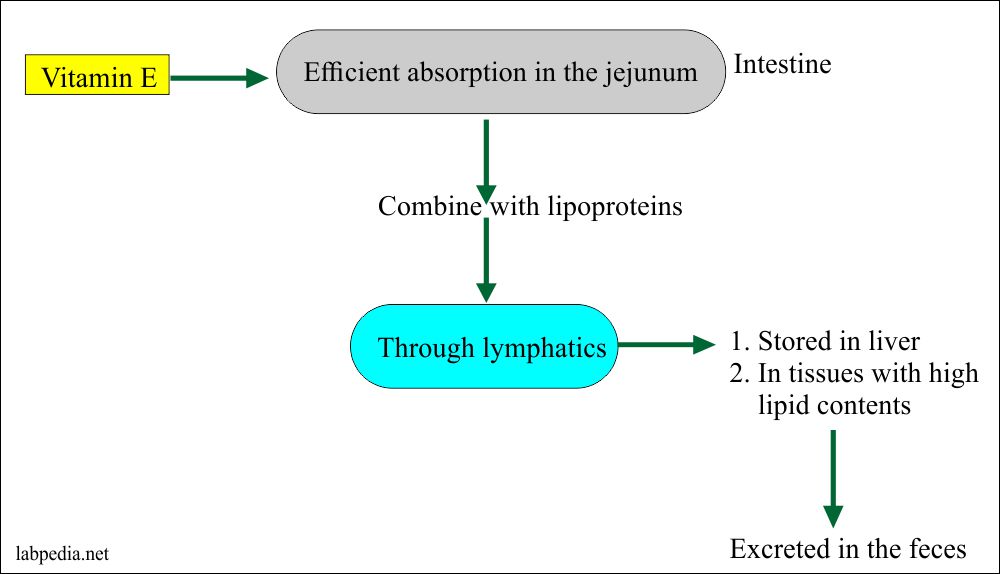Vitamin E (α-Tocopherol)
Sample
- The patient plasma is needed. For plasma take a sample in heparin.
- A fasting sample is preferred.
- The sample is stable at 4 °C for 4 weeks and at -20 or -70 °C for one year.
- Protect from light.
Precaution
- Avoid the use of alcohol at least 24 hours before taking the blood sample.
- Protect the sample from light.
Pathophysiology
- This is a powerful antioxidant vitamin.
- Oxidants which cause the disease, aging, and cleavage of fatty acids.
- This vitamin is soluble in fat solvents and insoluble in water.
- Its generic name is tocopherol which includes several biologically active isomers.
- α-tocopherol is the predominant isomer and is the biologically active form.
- It is viscous oil at room temperature.
- Stable to heat in the absence of oxygen.
- It plays a role in cellular respiration.
- The vit E contains 8 related natural compounds that are biosynthesized in plants and these are abundant in the vegetables.
- Eight Vitamin E subtypes are tocopherols and tocotrienols.
- Its most active unit is α-tocopherol.
- Its main function is antioxidants.
- Its absorption takes place in the presence of bile in the small intestine.
- Most of the tocopherol enters the bloodstream via lymph. So it is associated with chylomicron and very-low-density lipoprotein.
- Sources of vitamin E are:
- Vegetable oils.
- Fresh leafy vegetables.
- Eggs and yolk.
- Legumes.
- Peanuts.
- Margarine.
- Most of it is stored in the adipose tissue.
- When the normal dose of Vit, E is given then a very small amount appears in the urine.
- Functions:
- Antioxidant of the unsaturated fatty acids.
- Protect from the free radicals.
- Prevent the oxidation of vitamin A, DNA, and phospholipids of the cell membrane.
- Acts with selenium for the maintenance of cell membranes. This effect may be more neuronal. Due to Vit, E deficiency there is irritability and edema.
- There is peripheral neuropathy.
- There is a degeneration of the spinal cord.
- Vitamin E protects the RBC’s cell membrane from oxidants.
- The anemia is due to the fragile RBC membrane and there is no response to iron therapy.
- Hemolytic anemia in infants.
- These symptoms due to its deficiency are rare except in the case of malabsorption.
- Clinical presentation of vitamin E deficiency:
- The major symptom is hemolytic anemia.
- A relationship exists between vitamin E deficiency and progressive loss of neurological function in infants and children with chronic cholestasis.
Normal
Source 1
- Some recommend > 0.5 mg / 100 ml.
- Premature neonates = 0.31 to ± 0.06 mg/dL.
- 1 to 12 years = 0.3 to 0.9 mg/dL
- 13 to 19 years = 0.6 to 1.0 mg/dL
- Adult = 0.5 to 1.8 mg/dL
- Deficiency = <0.3 mg/dL
- Excess level = >4 mg/dL
Another source
- Recommended daily for adults male = 10 mg/day.
- For female = 8 mg/day.











0 Comments